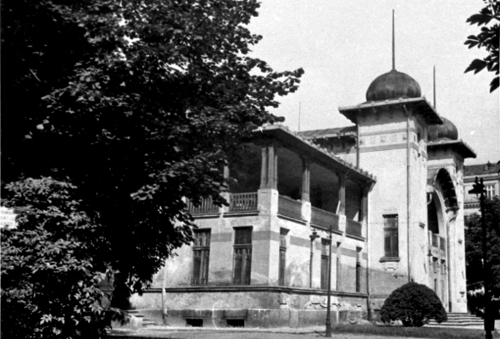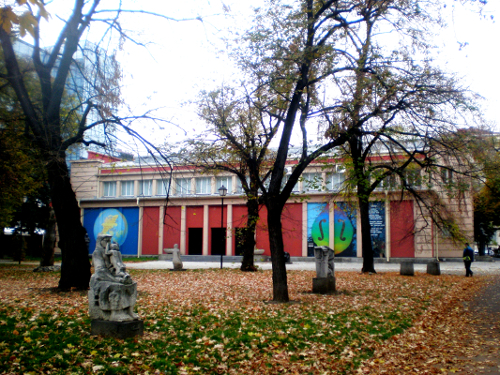1, General Gurko Str.

On the site occupied before the Liberation by the Bey’s harem and subsequently, though briefly – by the Fire Brigade, in 1908 opened the City Casino. It was designed by architect Naum Torbov, graduate of the Bucharest School of Fine Arts, proponent of the National Romanticism trend in architecture, and author of more than a hundred public, industrial and residential buildings in Sofia and the country.

The elegant Secession structure featured a loggia, an imposing avant-corps (section of the building extending from the façade) and two distinctive domes, linked by a gable arch. It had an eatery, a patisserie, a beer house, a gambling area and the capital’s largest hall, where the elite would gather for balls, celebrations, concerts and exhibitions. Not far from the Royal Palace, in the City Garden – one of the sites preferred by Sofians for their daily stroll, the Casino quickly became a hub of cultural and social life. It hosted exhibitions, concerts and visiting musicians; from 1910 on, the company of the National Theater performed there every Saturday, and on January 30, 1929, it organized the first Miss Bulgaria pageant. Among others, its regulars include Elin Pelin, Georgi Raychev, Theodor Trayanov, Kiril Hristov, Simeon Radev. Then again, the City Casino acquired also a dark fame: the anarchist group Red Brothers targeted it in a terrorist act (February 1, 1915), claiming four lives, including the daughter of then-Minister of War, Lieutenant General Ivan Fichev.
The building sustained extensive damage in the British–American bombing raids of January 10 and April 17, 1944. In 1948, begins work on the restoration and reconstruction to the present two-storey modernistic, stripped of decorative elements form, after the design of architect Nikolay Kazmukov. Listed as an architectural cultural monument, the building was consigned to the Union of Bulgarian Artists and was used as an exhibition hall. Since 1973, it houses The Sofia City Art Gallery, which officially opened its doors for visitors in 1977.